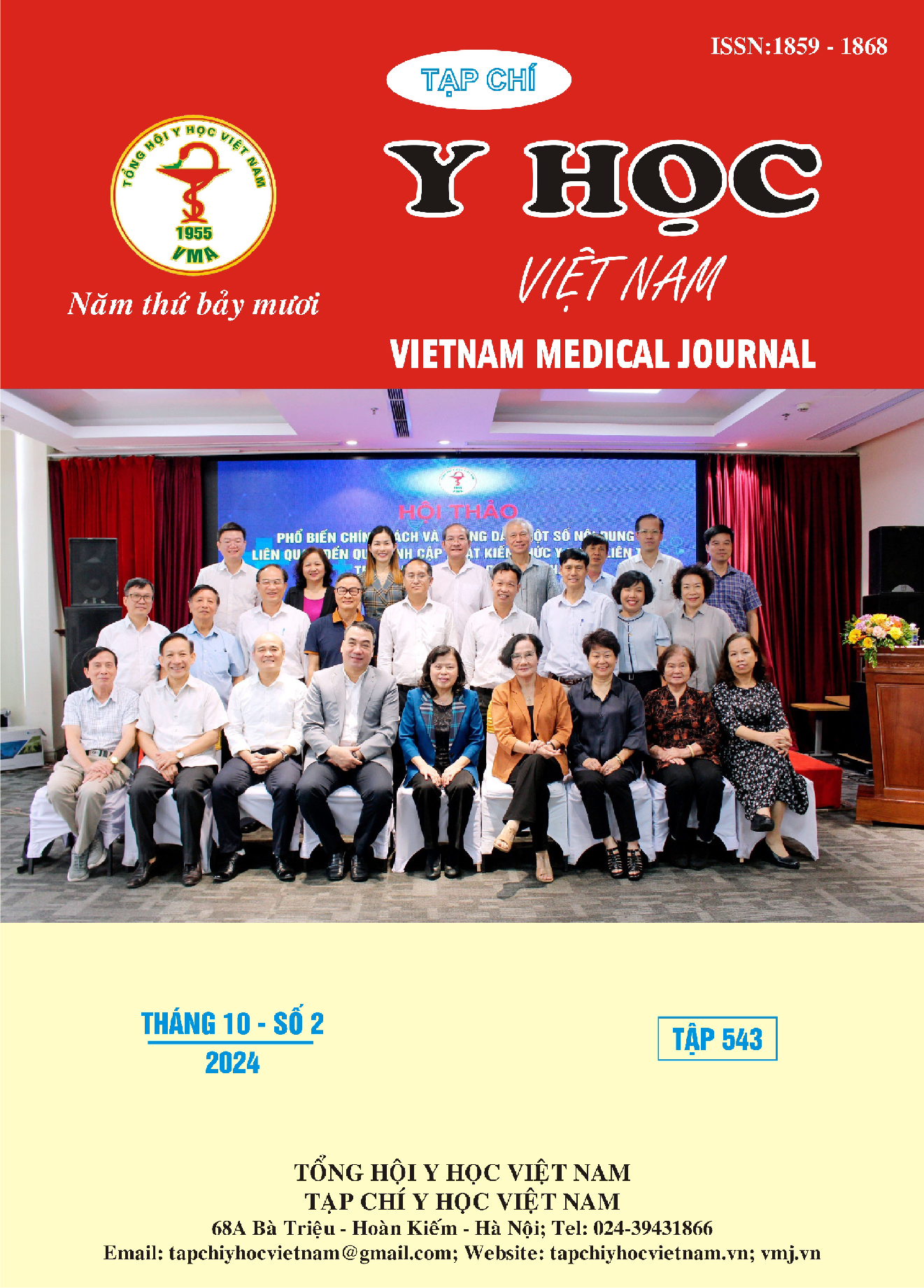CURRENT STATUS OF SLEEP DISTURBANCES IN PATIENTS WITH KNEE OSTEOARTHRITIS
Main Article Content
Abstract
Research objective: Describe current status of sleep disturbances in patients with knee osteoarthritis. Subjects and methods: Cross-sectional descriptive study on 116 outpatients with knee osteoarthritis treated at the National Geriatric Hospital and Bach Mai Hospital from December 2023 to June 2024. Results: The average age of the study subjects was 61.3 ± 10.7 years old, the majority were female, and the average BMI was 22.5 ± 2.68 kg/m2. About half of patients have moderate pain level according to the VAS scale and 44.8% of patients have nocturnal pain. The mean WOMAC score was 36.1 ± 11.8. The rate of difficulty sleep disturbances in patients with knee osteoarthritis is 76.7%, of which 94.4% are insomnia types and the rate of sleep maintenance difficulty is the highest (83.1%). The average time to fall asleep in patients with knee osteoarthritis and sleep disorders is 51.6±22.7 minutes. Average number of awakenings per night 2.3 ± 1.0. Time to fall back asleep after waking up is 27.9 ± 21.4 minutes. Waking up time is 28.8 ± 16.9 minutes earlier than usual. Average sleep time per night is 4.1 ± 1.0 hours. Sleep disturbances affect daytime activities mostly to a small and moderate degree with rates of 34.8% and 43.8%, respectively. Conclusion: Sleep disturbances are common in people with knee osteoarthritis and most of them affect daytime activities, so they need to be considered in the care and treatment plans for these patients.
Article Details
Keywords
sleep disturbances, knee osteoarthritis
References
2. Sasaki E, Tsuda E, Yamamoto Y, et al. Nocturnal Knee Pain Increases With the Severity of Knee Osteoarthritis, Disturbing Patient Sleep Quality. Arthritis Care Res. 2014;66(7):1027-1032. doi:10.1002/acr.22258
3. Mochizuki T, Tanifuji O, Koga Y, et al. Sex differences in femoral deformity determined using three-dimensional assessment for osteoarthritic knees. Knee Surg Sports Traumatol Arthrosc. 2017; 25(2): 468-476. doi:10.1007/s00167-016-4166-2
4. Hussain SM, Cicuttini FM, Bell RJ, et al. Incidence of Total Knee and Hip Replacement for Osteoarthritis in Relation to Circulating Sex Steroid Hormone Concentrations in Women. Arthritis Rheumatol. 2014;66(8):2144-2151. doi: 10.1002/art.38651
5. Curry, Zachary A. MD, PhD; Beling, Alexandra MD; Borg-Stein, Joanne MD. Knee osteoarthritis in midlife women: unique considerations and comprehensive management. Menopause 29(6):p 748-755, June 2022. | DOI: 10.1097/GME.0000000000001966
6. Kuralay C, Kiyak E. Sleep quality and factors affecting patients with knee osteoarthritis. International Journal of Caring Sciences. 2018;11(2):1141-1146.
7. Chen C, McHugh G, Campbell M, Luker K. Subjective and Objective Sleep Quality in Individuals with Osteoarthritis in Taiwan. Musculoskeletal Care. 2015;13(3): 148-159. doi:10.1002/msc.1094
8. Wilcox S, Brenes GA, Levine D, Sevick MA, Shumaker SA, Craven T. Factors Related to Sleep Disturbance in Older Adults Experiencing Knee Pain or Knee Pain with Radiographic Evidence of Knee Osteoarthritis. J Am Geriatr Soc. 2000;48(10): 1241-1251. doi:10.1111/j.1532-5415.2000.tb02597.x


